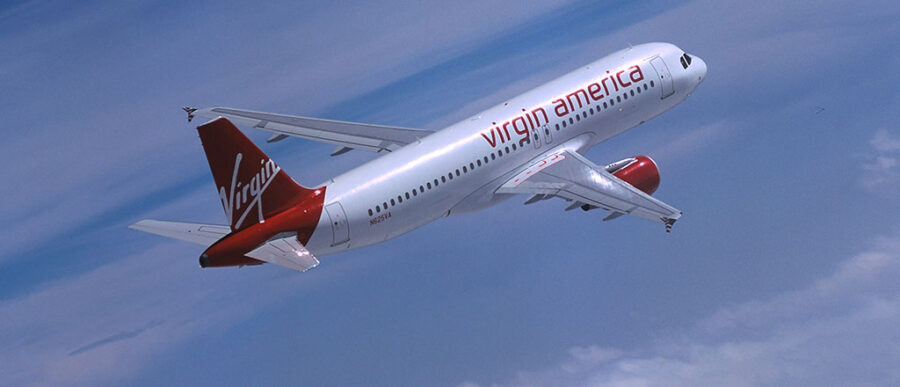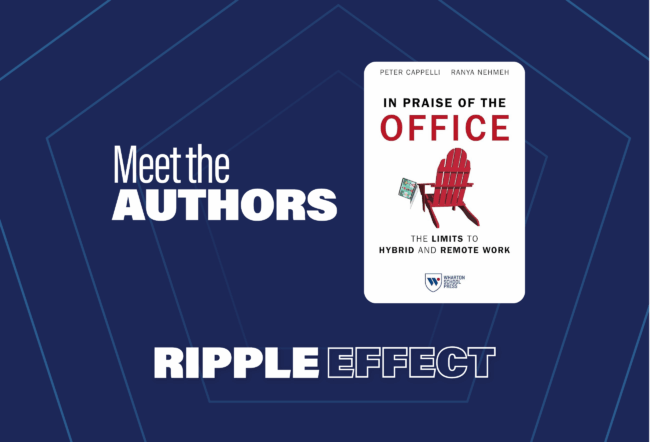How do you start a massive new business in the face of investor skepticism, determined regulatory opposition and a global economic downturn? If you’re Virgin America airlines, the answer involves political savvy, tenacity and skillful use of social media — not to mention some last-minute assistance from a Summer of Love rock legend.
Fred Reid, founding CEO of Virgin America, told the story of Virgin’s launch as part of Wharton San Francisco’s Executive Speaker Series. Virgin America, which began service in August 2007 and focuses on offering flights between major cities on the East and West Coasts, is an entirely separate entity from Richard Branson’s Virgin Atlantic; Branson, in fact, is restricted to being a minority shareholder in Virgin America due to laws that limit foreign ownership of U.S.-based airlines. Such laws are common in global aviation.
Though the flamboyant Branson directly or indirectly controlled less than half of Virgin America, his connection with the airlines would become the dominant issue in its efforts to win approval from the U.S. Department of Transportation. Reid said the process took 18 months, longer than normal for an airline.
The reason, Reid recalled, is that Branson had for many years worked to convince United Kingdom regulatory agencies to deny to American carriers much-coveted expanded landing rights at London’s Heathrow Airport. When a company associated with Branson announced it would be seeking approval to get started in the U.S., his competitors from the American airline industry wasted no time returning the favor — and, according to Reid, the companies had a sympathetic ear from the U.S. Department of Transportation.
The efforts to launch the airline began in New York in 2004. Reid noted that Virgin America had ambitious plans from the start. For example, it wanted to launch nationally from day one, something he said had rarely been done. (Airlines such as Southwest that are now national carriers started out as regional operations and grew slowly.) It also planned on operating in what was considered the most prestigious airport in each market where it planned to offer flights. For example, Virgin wanted to fly out of San Francisco International Airport in the Bay Area rather than Oakland International.
“You always hear that people are everything, but often, that’s a platitude that gets ignored. At Virgin, it wasn’t ignored.”
“It took quite a bit of nerve,” Reid said, and also, money. The company ended up raising $177 million in venture capital — more than had ever been raised for an airline, Reid noted.
White Leather and Seatback Screens
Right from the start, Reid said, the Virgin America team was very conscious of the sort of branding issues that would eventually become one of the operation’s hallmarks. The business intended to provide the best first-class experience available, and took a number of unusual design steps to make that happen, such as choosing white leather for all first class seats.
The company also famously designed the planes to feature a video screen in every seatback, which would carry live television and other forms of in-flight entertainment that were unknown at the time. And it added seemingly minor features that made a significant difference for passengers, including electrical outlets at every seat for corporate road warriors concerned about their laptops running out of power mid-flight. The power outlets proved so popular, Reid said, that they eventually starred in a Virgin America commercial.
(While Virgin America became famous for its seatback screens, Reid noted that were he designing the in-flight system today, he would omit the feature, simply because most passengers now bring their own laptops or tablets. He would instead install as powerful a wireless networking system as current technology would allow.)
There were other parts of the airline industry rulebook that Virgin America planned to ignore. Reid pointed out that its pilots, for example, weren’t assigned uniforms that looked like they belonged on “admirals in the Russian navy.” And they would be urged to mingle with guests before departure, rather than exist merely as omniscient voices on the plane’s PA system.
Hiring was approached carefully. Reid said he wanted everyone at the company to have a common sense of purpose. “We spent more time on that that anything else,” he noted. “You always hear that people are everything, but often, that’s a platitude that gets ignored. At Virgin, it wasn’t ignored. We wanted people who were energetic and who put their heart into it. When people walk into a meeting room and they are angry or frustrated, or they annoy other people, it’s a cancer on the entire organization.”
When the Virgin team first started working, leadership compiled a list of 5,400 things that would need to be completed before the airline could launch. One by one, Reid said, most of them got done.
Unexpected Turbulence
There were, of course, hiccups. For example, while Virgin America was using Airbus planes, the custom interior work involving the company’s unique colors and lighting system were to be installed by a Canadian company. The Toronto firm took delivery of the craft, and was very nearly done with its work when the Canadian government told Virgin it was impounding the plane because the company involved had not paid its taxes, Reid recalled. It took more than a month for the plane to be cleared to fly out of Canada.
By far the biggest hurdle, though, involved U.S. regulatory approval. Reid said that Virgin officials had estimated the process would take 10 months, arriving at the figure after noting that JetBlue took four months to go through the same process.
While landing rights had long been a trade issue between the U.S. and Britain, Reid noted that in 2005, when Virgin America officially submitted its 408-page application, the timing was believed to be opportune. Political relations between Washington and London were good because of British support for the Iraq War.
But things didn’t work out the way the company had hoped. As soon as the application was filed, briefs protesting it were submitted to the U.S. Department of Transportation by nearly every major American carrier, still angry about being shut out of Heathrow routes, as well as by labor unions, which objected to some of Virgin America’s hiring practices.
“While I never showed fear, I would sometimes share with everyone the fact that I was nervous.”
Eighteen months after the application was filed, the Department of Transportation made its initial ruling. The application was rejected. While there were a number of issues cited, the main reason involved concern about the extent to which Branson would be controlling the company.
Reid was asked if Branson ever considered becoming an American citizen to speed up the approval process, a step taken in another industry by Rupert Murdoch. In response, Reid said Branson told his fellow executives he would never be granted U.S. citizenship simply because he smoked too much marijuana.
To help win regulatory approval, the company hired lobbyists and enlisted support from numerous politicians, including then-senator Hillary Clinton, California senator Diane Feinstein, Arnold Schwarzenegger (former governor of California) and Gavin Newsom (former mayor of San Francisco).
‘Textbook Viral Marketing’
It also made use of the emerging field of social media. For example, Diggnation, a site popular at the time with programmers, was invited to do a live podcast from the first-class section of a Virgin America plane. Reid made a YouTube video showing off the hip interior of the company’s plane. Virgin sponsored a contest to name the planes in its fleet, and received responses from all over the world. The company also registered the domain LetVAFly.com, and used it to encourage potential customers to write to their representatives in Congress, the White House and the Department of Transportation. In the end, 150,000 letters were sent.
“It was textbook viral marketing,” Reid noted. Throughout the process, Reid said he kept the entire company fully appraised of everything that was going on, including the setbacks — an approach he described as crucial to maintaining morale during a rough period. “We would communicate copiously,” he recalled. “While I never showed fear, I would sometimes share with everyone the fact that I was nervous.”
In 2007, the company finally got the approval to launch, but only in connection with a deal in which Reid would leave his CEO position as part of a management restructuring. He did, following a 10-month transition period.
When the Virgin team first started working, leadership compiled a list of 5,400 things that would need to be completed before the airline could launch. One by one, most of them got done.
The first day of operations involved a press conference at San Francisco International beside the first Virgin America craft, dubbed “Jefferson Airplane.” On hand was Grace Slick, the singer from the legendary 1960s rock group, who used some of her time at the microphone to joke that when it came to San Francisco band names, Virgin had little choice, since one of the few alternatives was the Grateful Dead.
While the airline eventually got off the ground, the delays were expensive. Reid estimates that the price tag eventually exceeded $100 million.
Since its launch, growth has been dramatic. Headquartered in the San Francisco suburb of Burlingame, Calif., Virgin America now has 3,000 staff members, operates 53 aircraft out of 23 airports, and has three million members of its frequent flyer club and a half-million Twitter followers. It is routinely rated the No. 1 U.S. airline by travel magazines such as Conde Nast.
While posting losses in its initial years, recent quarters have seen improved results. According to Reid, if those financial trends continue, the company might file for an IPO late next year. Were that to occur, it would be yet another vindication of what Reid said was Virgin America’s basic philosophy of doing business: “Love your people, love your guests and show that all the time.”



